Weeds are the worst.
They’re ugly. They're stubborn. They make your lawn look neglected.
They cause you embarrassment and frustration. Nobody wants to be that homeowner with the weed-infested lawn.
If you battle weeds, you’re not alone. What are the most common lawn weeds in Eau Claire, WI?
What are some tips for lawn weed identification?
And, the prize-winning question: how to get rid of them?
Let’s get to the answers.
Common Lawn Weeds in Wisconsin
Here are the biggest offenders on the worst weeds list:
1. Crabgrass
When it comes to common lawn weeds in Wisconsin, crabgrass wins.
Crabgrass is a warm-season annual with an impressive claim to fame: each crabgrass plant produces as many as 150,000 seeds.
Those pesky seeds stay behind, ready to germinate the following spring and start the evil cycle all over again. Even seeds that don't germinate right away can hang around to sprout in future years.
No wonder crabgrass is such a pain.
What it looks like: The leaves of crabgrass are broader than grass blades and it grows in clumps close to the ground. The stems grow outward rather than up, and look like the legs of a crab.
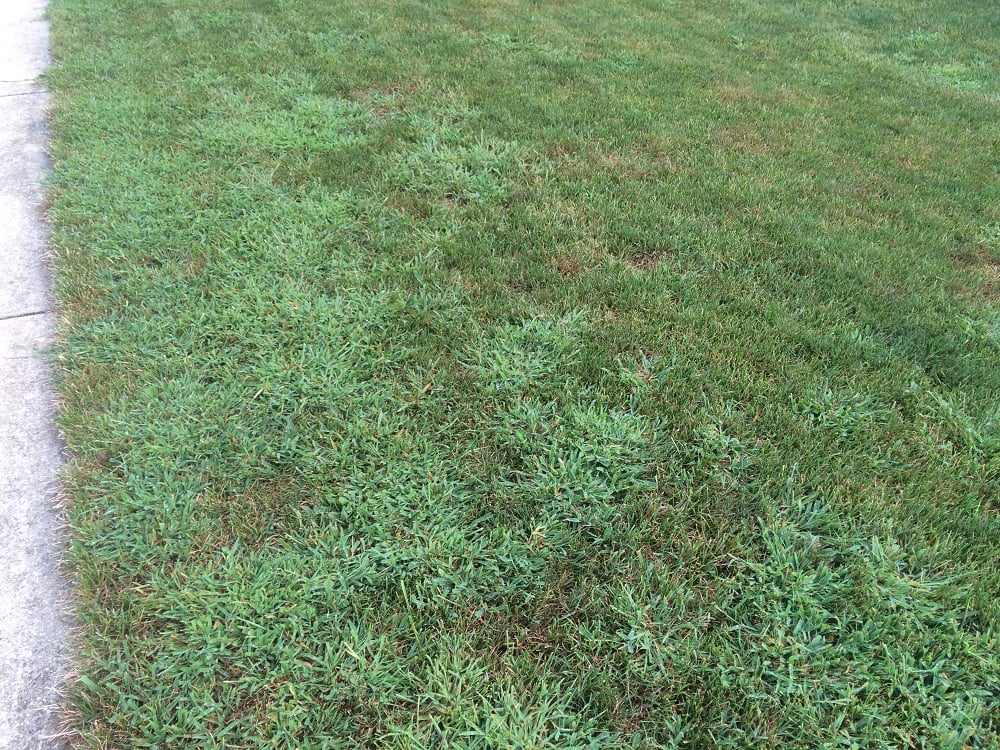
How to get rid of it: The key is preventing those stubborn seeds from becoming more seed-producing plants.
Pre-emergent treatment is crucial — targeting those seeds as they germinate and take root in the soil. But like most weeds, crabgrass is stubborn and can sneak through even if you applied pre-emergent, particularly in thinner areas or along edges. However, these invaders can be spot-treated.
While most lawn care companies do one crabgrass application in the spring, here at RainMaster, we do two, one in early spring and another in late spring. This extends protection. (We really hate crabgrass.)
2. Dandelions
Dandelions are another one of the most common lawn weeds in Wisconsin. It’s a perennial and like most lawn weed types, propagates through the spread of seeds.
Have you given a puff to a dandelion and watched its seeds scatter in the wind? You just helped a bunch more dandelions grow.
Those seeds germinate really easily. And they can last for decades, sprouting long after you blow on that puff ball.
What it looks like: Dandelions have smooth, sharply toothed leaves; bright yellow spiky flowers; and round, puffy white seed heads.
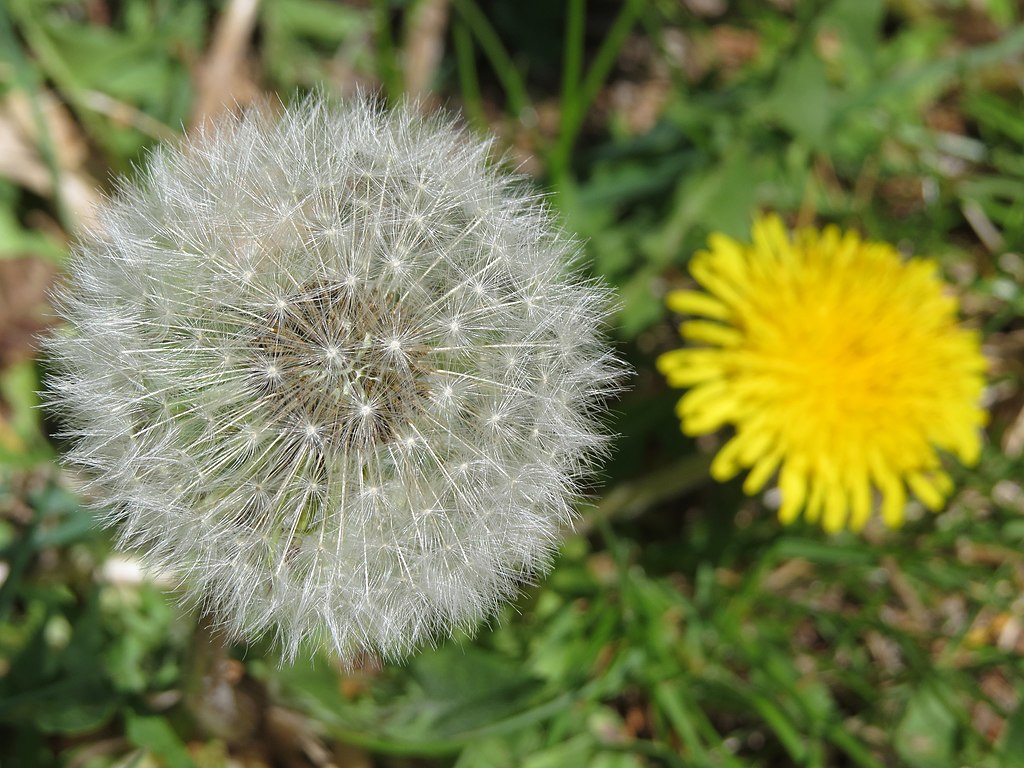
How to get rid of them: Most people think dandelions originate in the spring, but dandelion seeds actually germinate in late summer and early fall.
We target dandelions with a specialty “weed shield” herbicide designed to reduce the number of dandelions that emerge. If any sneak through, we can treat them any time of year with a broadleaf herbicide.
3. Creeping Charlie (Also Called Ground Ivy)
This tenacious perennial gets its name from its creeping stems that grow along the ground. Those stems, and its seeds, are how it spreads. And spreads.
What it looks like: Creeping Charlie is a green vine with round, scalloped-edge leaves. It has a purple flower but is best identified by its growth habit. It grows close to the ground and forms a mat-like ground cover.
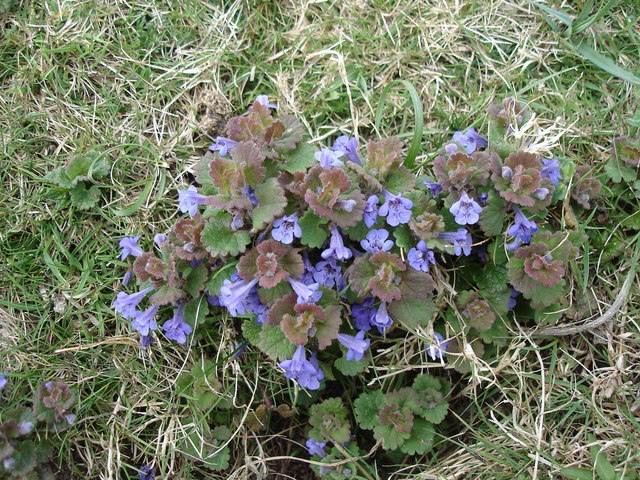
How to get rid of it: Like most lawn weeds, creeping Charlie thrives in an unhealthy lawn. So, a healthy lawn is your best defense.
But if it strikes, it's tough to conquer. It’s not affected by most broadleaf herbicides.
If you have just one or two of these stubborn invaders, pull them out by hand. But if it’s a large patch, that may not be a good idea. Creeping Charlie will reproduce from its seeds but it also spreads rapidly by growing more roots along its stems. Pulling out this weed and missing any stems or throwing them into other parts of your lawn may actually stimulate more growth. This is why this lawn weed is so difficult to control.
When necessary, we tackle them with a specialty liquid herbicide with multiple applications throughout the year. Using a professional-grade, specialty herbicide in the fall will also go a long way to combat this weed. Your typical home improvement store weed control won’t do the job.
4. Clover
A fun fact about clover: it produces its own nitrogen, so it really thrives in lawns that are undernourished. A healthy, well-fed lawn means fewer clover.
What it looks like: A sure sign of clover is its delicate round white or pink flowers. You’ll also see three leaflets at the end of a long stem.
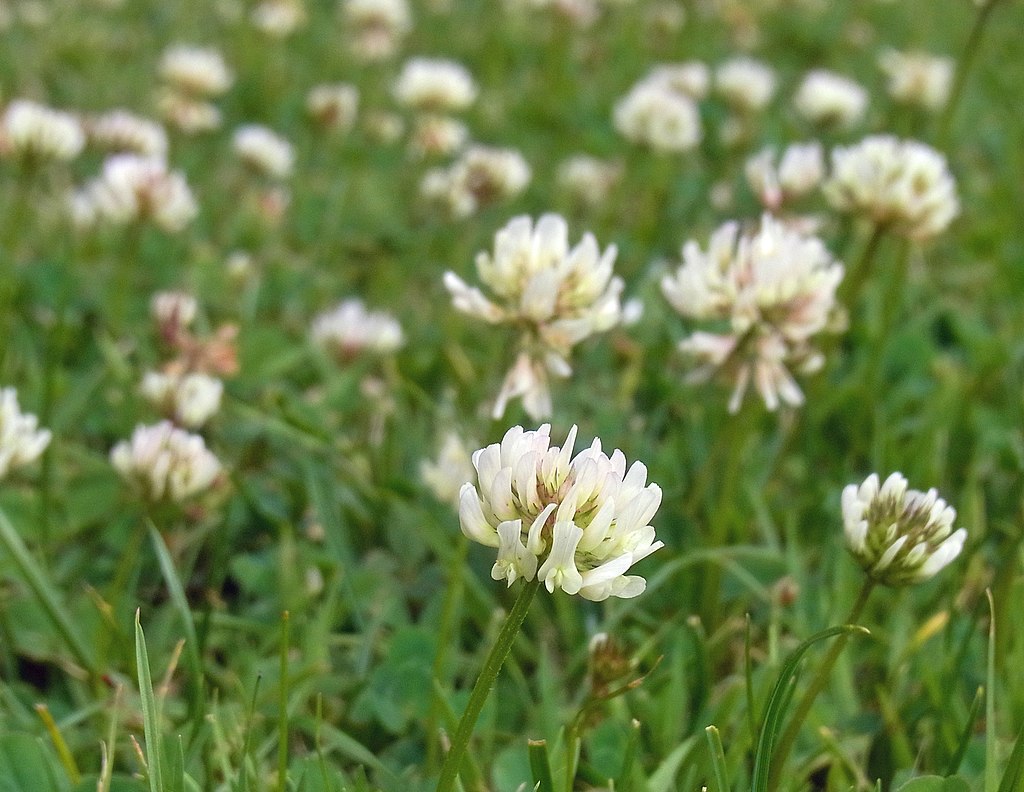
How to get rid of it: More on this later, but the best way to prevent clover is to have a thick, healthy lawn that isn’t mowed too short. Regular fertilizer helps. A thick lawn will crowd out clover.
5. Broadleaf Plantain
This aggressive, stubborn perennial weed thrives in neglected lawns, and especially likes wet areas with little sun. It has a shallow, thick taproot up to 18 inches long that keeps it alive over the winter.
What it looks like: Plantain has medium-green, oval-shaped leaves that form flat rosettes. Flower spikes emerge in late spring with dozens of tiny flower buds.
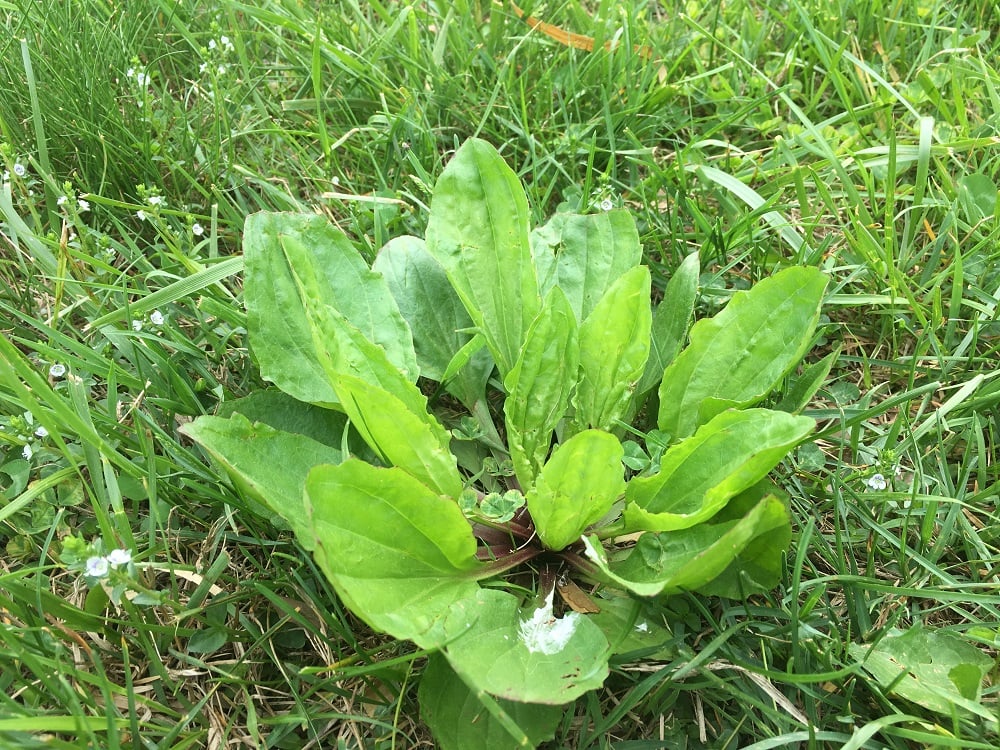
How to get rid of it: This weed thrives in compacted soil; thin lawns; lawns that are mowed too short; moist shade; and areas that get inconsistent irrigation.
Get rid of these problems, and you’ll discourage plantain. Aerate your lawn in the fall, especially if your soil is compacted. Mow your lawn high, at 3-4 inches. Seed any sparse areas. If it does show up, it can be treated with a broadleaf herbicide.
6. Poa Annua
Also called annual bluegrass, Poa Annua is one of the most common grassy lawn weed types. It germinates in late summer or early fall, grows throughout the fall, then flowers the following spring.
What it looks like: It looks a lot like Kentucky Bluegrass, but it’s a lighter shade of green. It develops a short seed head early in the season and usually dies off in the summer when the weather gets hot, leaving ugly bare spots in your lawn.
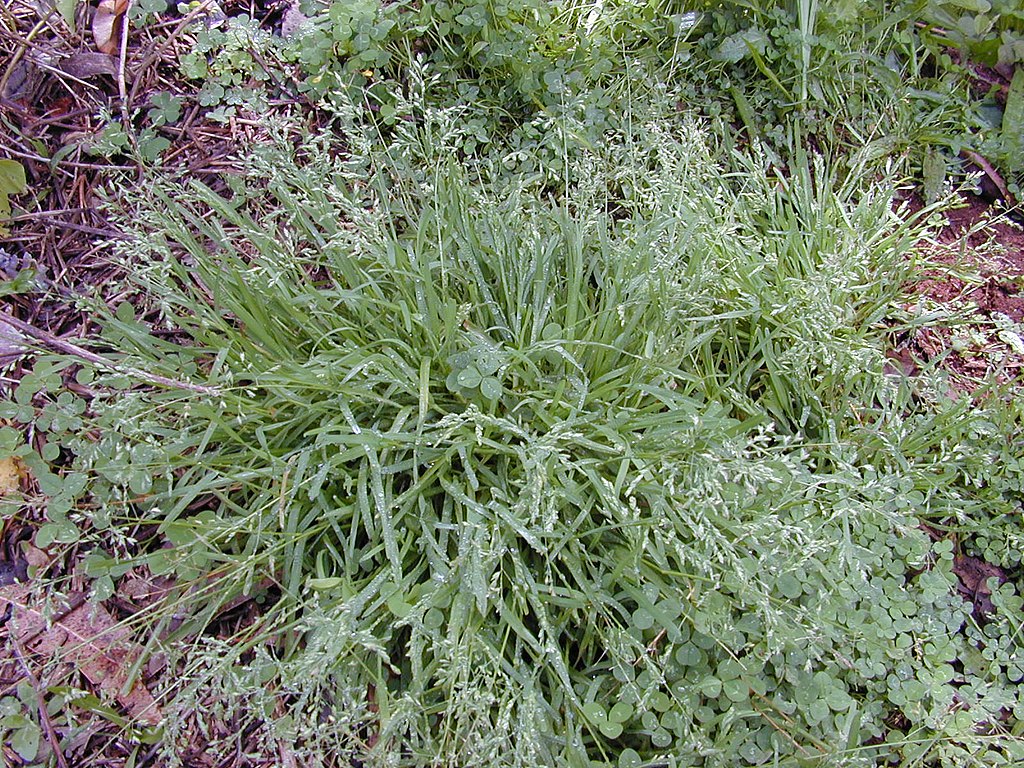
How to get rid of it: The only real option to attempt to control this weed is to spray it multiple times with a non-selective herbicide while it is actively growing and then renovate these areas. However, there still may be a chance that this weed will reappear as seeds may be dormant in the soil beneath.
The Best Defense Against Lawn Weeds in Eau Claire, WI
By now, you should notice a common theme: Preventing weeds is easier than getting rid of them. And a thick, healthy lawn is the best way to prevent weeds.
Weeds hate healthy lawns.
A few key tips:
Mow High
We know, it’s tempting to mow even lower than usual to mow down those annoying buggers. But it doesn’t work that way. 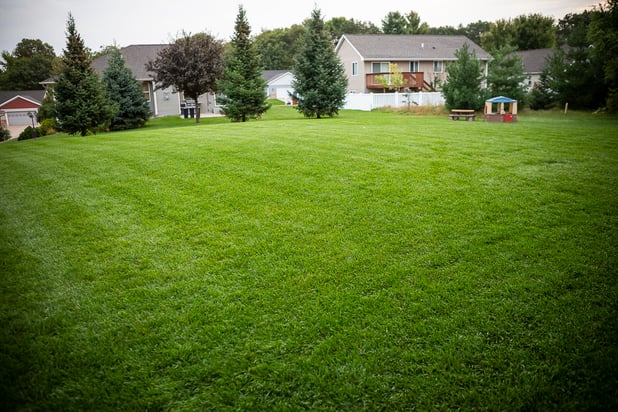
Taller grass helps a lawn grow thicker. Mow too short, and the soil heats up, helping those pesky weed seeds to germinate.
Shorter grass also has a weaker root system, which makes it more susceptible to weeds.
What about golf courses, you ask? They’re really short and pretty much weed-free.
They also have a team of groundskeepers working on this turf each day, including frequent fertilizing and constant weed control treatments.
We’re so intent about you mowing your grass taller, we’ll be handing out rulers to show you the exact height to mow.
Proper Watering
A lawn that’s too wet or too dry encourages weeds.
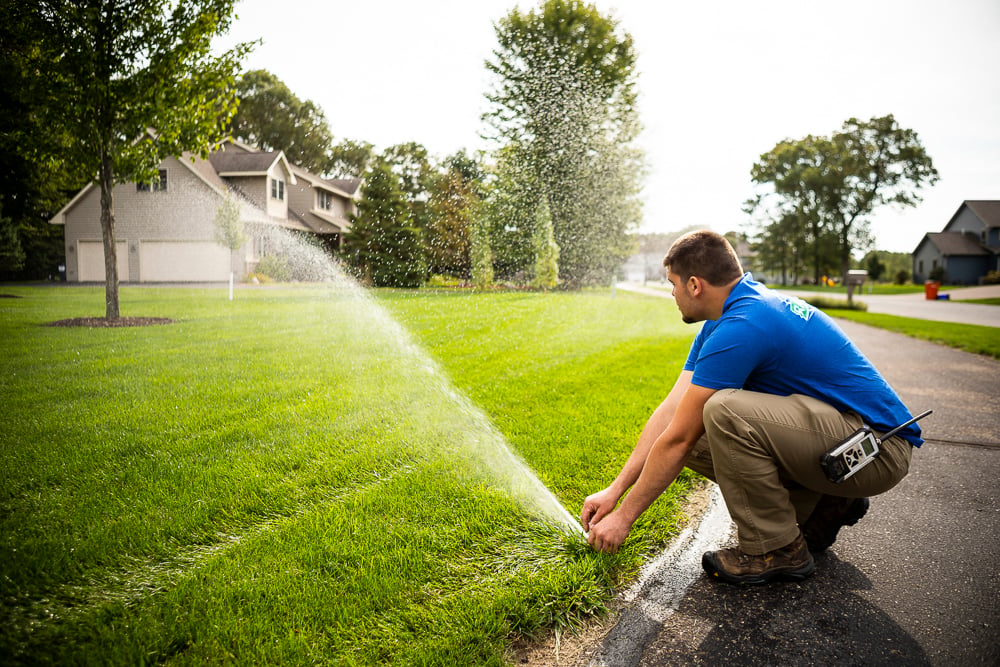
You can invest in a professionally-installed irrigation system to help water your lawn correctly and efficiently. Another alternative is to pick up some hoses, timers, and sprinklers. It’s more time consuming and cumbersome than a professional system, but it’s better to water your lawn properly on your own than to just ignore its needs.
Timing Is Everything
When you see weeds in your yard, sometimes it seems like they sprouted overnight.
They didn’t. The weeds you see actually started germinating in the soil weeks or months ago.
That’s why you need a complete, proactive lawn care program that includes both weed preventative and curative treatments from early spring to late fall.
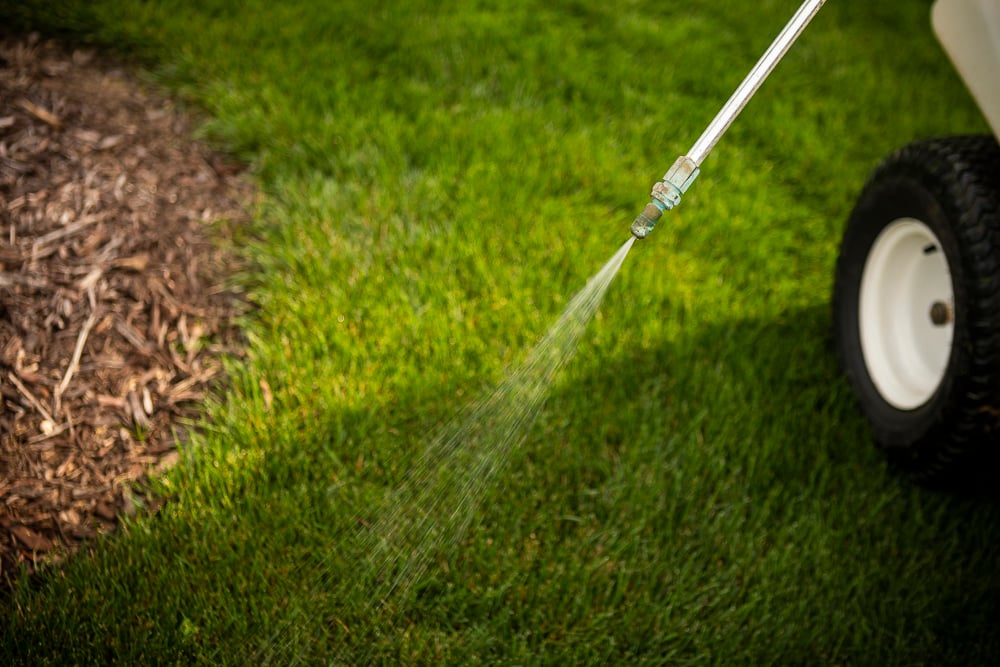
Spring preventative treatments are based on soil temperature. Here in Wisconsin, that means our start time can range from March to May. Curative weed spray treatments occur from April through early October.
If your lawn looks healthy, can’t you skip weed prevention?
Nope. Remember, those seeds are hanging out, sometimes for years. Ignore them, and they’ll turn into ugly weeds.
Weed Control is a Process
Weed control isn’t a one-time thing. It’s a continuous process.
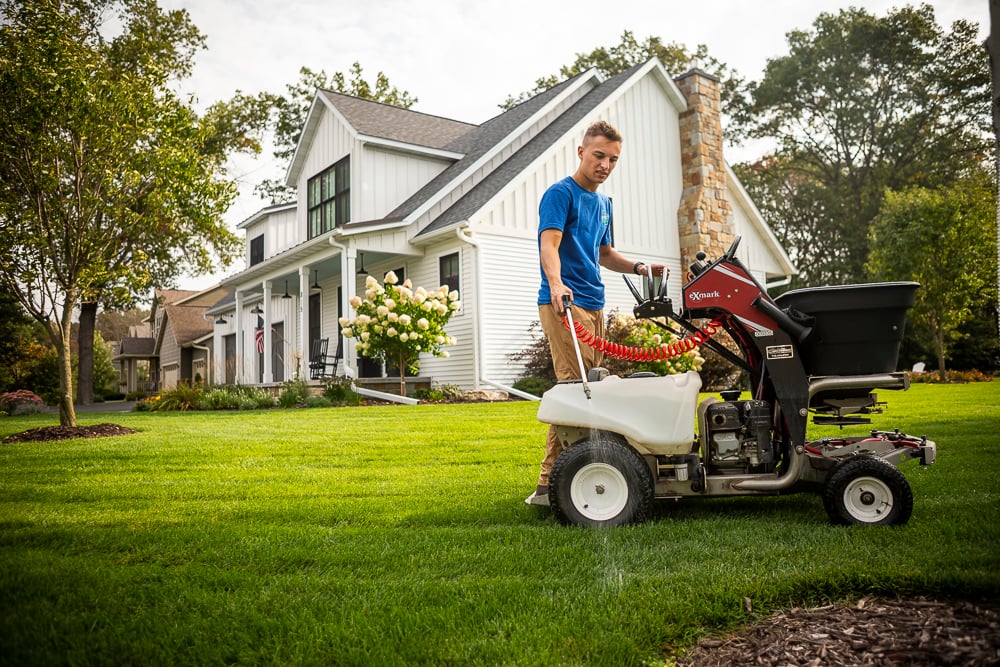
Different common lawn weeds in Wisconsin are active different times of year. Many of the peskiest spring weeds actually germinate in the fall.
And some products work based on temperature, which means we may switch products as needed, based on the weather.
There’s a lot more involved than just applying products on your lawn.
Sometimes Spot Treatment is Enough
We know you care about the environment, just like we do.
That means we don’t blanket your lawn with weed treatment if it isn’t necessary.
Crabgrass needs that whole-lawn treatment, but other weeds might just show up occasionally.
If you have just a few weeds, we’ll treat just those weeds.
You Still Might See Weeds
When we visit your property to prevent or treat lawn weeds in Eau Claire, WI, you get skilled, knowledgeable technicians and the best products available.
We’ll do everything we can to make sure your lawn is the best it can be and take care of those pesky weeds.
While we’d love to claim we can rid your lawn of 100 percent of its weeds, that’s just not possible. Or honest.
Some weeds haven’t yet germinated when we visit your property. Others may creep in from your neighbor’s yard. Weeds are pretty tenacious.
We’re happy to return to nab those persistent weeds, at no charge. Or we’ll treat them at our next visit. You don't want weeds, and we don't want you to have weeds.
Remember, it often takes 10 days or longer for products to kill weeds. It’s not about how fast we knock those weeds down. It’s about knocking them out for good..
Battling Lawn Weeds in Eau Claire, WI? RainMaster Can Help
You want a healthy lawn with fewer weeds. That’s what we want, too.
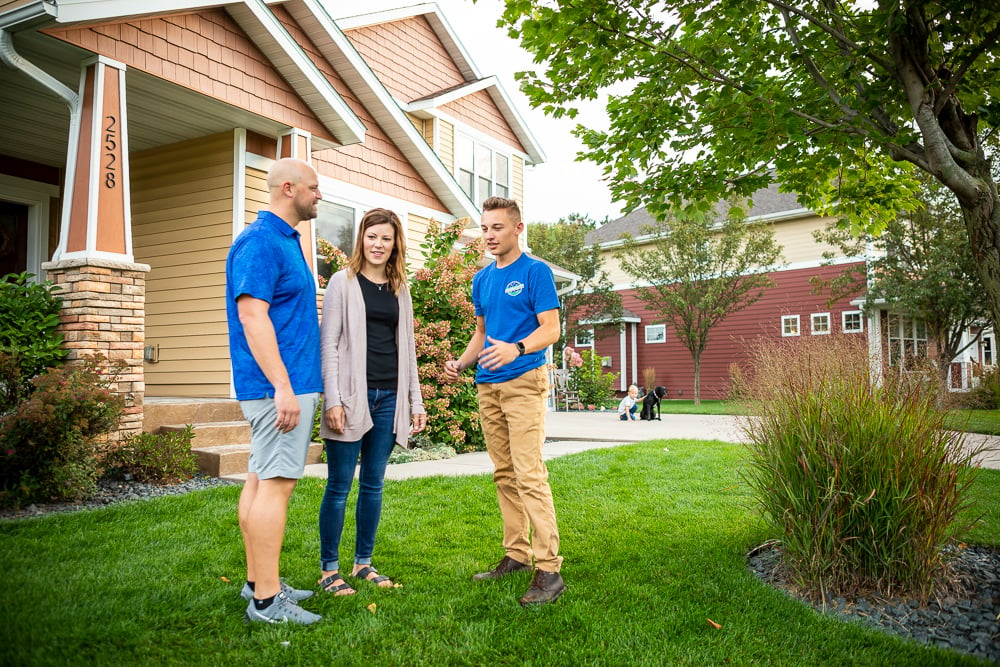
Consider it a team effort. Let’s create a custom nutrition plan for your lawn, so the roots will be nourished, the soil packed with nutrients, and your grass so thick and healthy, weeds will have a tough fight ahead of them.
But if they do show up, we’re ready.
Are you ready to stop battling lawn weeds? Request a quote today! We’ll review your options together so you can make a great choice. Then, you can finally enjoy your lawn and stop worrying about it.
Image sources: dandelion, ground ivy, clover, poa anua


